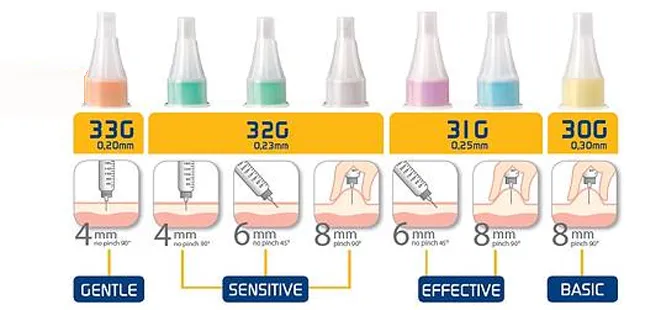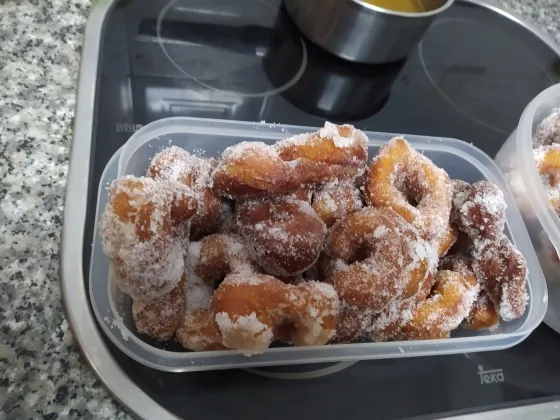Insulin is administered in subcutaneous fat, avoiding injecting at the intradermal or muscular level, since it may be more painful or alter the absorption speed.
A syringe for insulin is a little thinner than normal syringes.This type of syringe has a fairly fine plastic tube and a small and fine needle to puncture.In general, the capacity of insulin syringes is 1 ml or less and are used only to administer insulin.
Insulin is administered in subcutaneous fat, avoiding injecting at the intradermal or muscular level, since it may be more painful or alter the absorption speed.To ensure adequate insulin puncture, several factors must be taken into account, including the choice of a suitable needle and thickness.
How to correctly choose the size of the needle
Less needle thickness entails less pain: the thickness of the needle is measured in gauges and is expressed with a G. The higher the number of G, the lower the thickness.The needles that hurt are the ones that have 31g and 32g thick.
Adapt the insulin needle to the thickness of the skin: skin thickness in adults varies between 2.0 and 2.5 mm, although it can range between 1.25 and 3.25 mm.However, children's skin is slightly thick than adults, children's subcutaneous fat is increasing thick in puberty, until it reaches adult levels.Therefore, it may be frequent that intramuscular injections occur in very thin and young people if long needles are used.Thus, the shortest needles that currently exist in the market (4 mm in length) correctly cross the skin of both children and adults.
Insulin absorption is identical, whether it is administered with a 4 mm or 8 mm needle.
The shortest needles are better tolerate, they are safer and less painful: recent studies have shown that the 4 mm needle is safe and effective in adult patients from all BMIs.With this needle length, the perpendicular puncture technique (90 degree angle) without pinch is recommended.
The needles should measure a maximum of 6 mm in length, since the needle recommended above 8 mm increases the risk of intramuscular puncture.
Currently, the shortest length for injection pen is 4 mm and that of syringe is 6 mm (because it must cross the insulin road cap).







